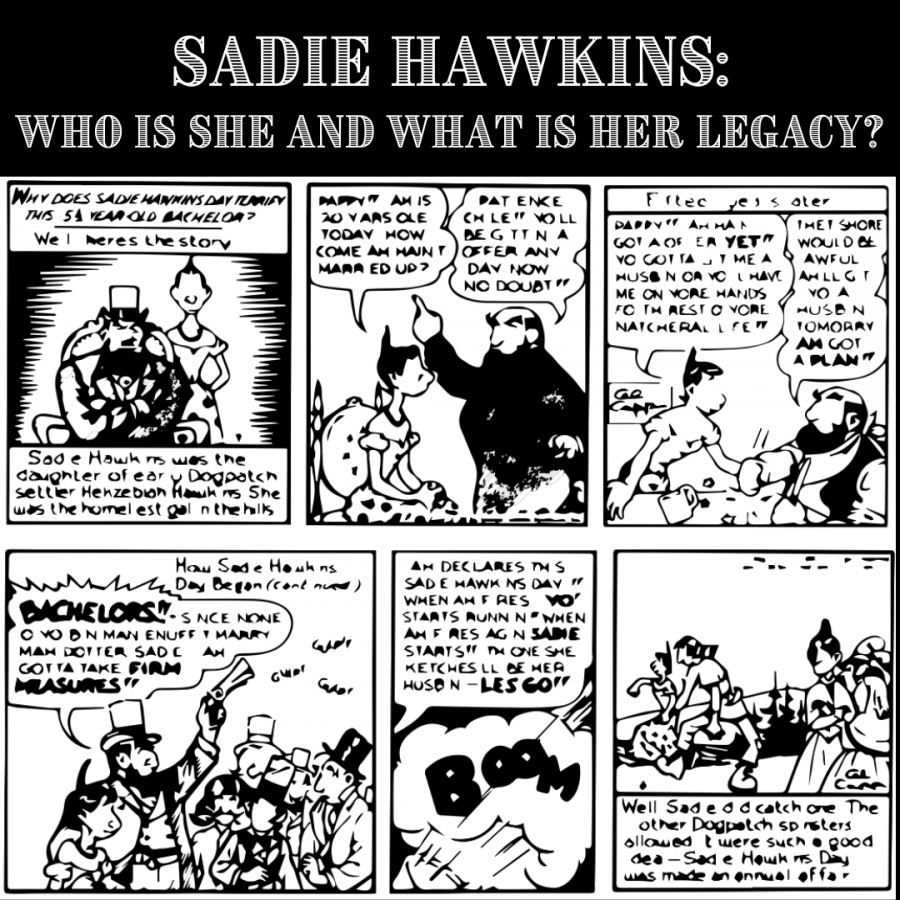Sadie Hawkins: Who Is She and What Is Her Legacy?
November 14, 2021
Annually recognized on the first Saturday of November, Sadie Hawkins Day claims to celebrate female empowerment, yet its roots lay with a somewhat degrading cartoon.
On Nov. 15, 1937, American cartoonist Alfred Gerald Caplin, better known as Al Capp, published a comic strip titled Li’l Abner; the cartoon features Sadie Hawkins, “the homeliest gal” and the daughter of a prominent, wealthy figure in the fictional town of Dogpatch. Through his drawings, Capp depicts Hawkins as the most unattractive woman in the town who is unable to find a husband due to her appearance.
The concept that drives the comic strip is that Hawkins’s father created a day for all the single women in Dogpatch to chase after the single men; and once catching them, the women can make them their husbands. When the protagonist, Li’l Abner, was caught by one of the single women, Capp stopped publishing the comic; however, the spirit of Sadie Hawkins lived on.
One year after Capp’s comic strip was published, his idea was modified to serve a practical, real-life purpose: enter the Sadie Hawkins Dance. This dance was adopted by colleges nationwide as a time for female students to ask male students to a formal dance, thus reversing the gender roles.
Although the dance claims to encourage female empowerment, its history has led some to question otherwise.
“I think that Capp does this as a tactic of misogyny rather than female empowerment, even though that is what the Sadie Hawkins Dance has turned into,” Miami Palmetto Senior High junior Christina Perez said.
The fact that Capp highlights the appearance of a woman that does not fit the stereotype of a beautiful girl reveals his own objectification of women; the emphasis on looks rather than personality is the epitome of the sexualizing of females that occurs in society today.
Ranging from supermodels to social media influencers to girls in your classroom, an “ideal” look is continually pushed, pressuring girls to reach an unattainable and consistently changing appearance. Though the body standards have gone through extreme changes since the 1930s, Li’l Abner reveals the longevity of the value that society places on appearances.
Although the Sadie Hawkins Dance tries to promote strong women, the dark history that precedes it is often forgotten, even with its ongoing presence in daily life in the 21st century.










